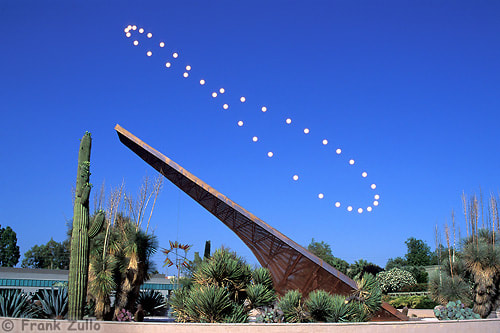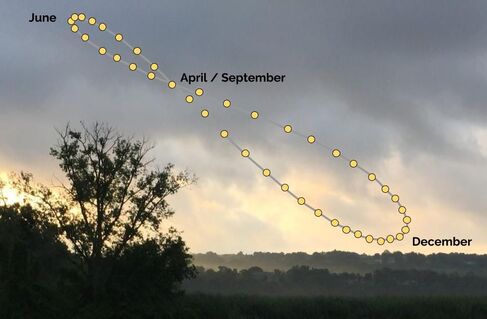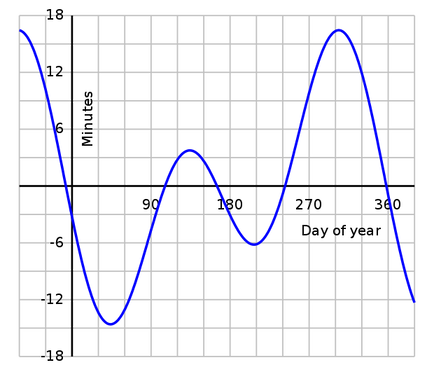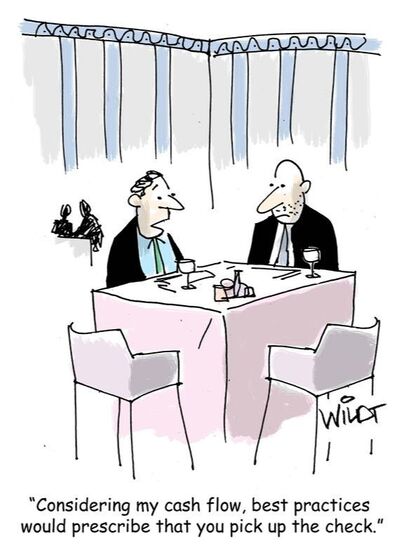|
Everyone living in the middle latitudes experiences the Earth’s seasons—and people have observed these changes for thousands of years. The sun is highest in the sky during the summer months and lowest in winter. Early people weren’t dumb—they could see that as the seasons changed, so did the time of sunrise and sunset. Constructing a sundial to track the daylight hours is an easy matter: put a stick upright in the ground and mark the points that the shadow of the stick’s tip casts in the course of a day. Many cultures developed elaborate ways of tracking the annual cycle of the seasons and keeping time, including Sumerians, Egyptians, and Mayans, to name only a few—and these cycles were often based on observations of the Sun, Moon, and sky. The term “analemma” was used in Alexandria and Rome for a diagram or “sketch” attributed to the Roman architect Vitruvius. This complex geometrical diagram allowed one to construct a sundial at any latitude without having to make measurements of shadow length. These days, analemma refers to the curve the Sun appears to draw in the sky if its position is captured at the same time of day over the course of an entire year. This curve was difficult to obtain by observation until we developed photographic techniques for multiple exposures. The Sun’s position doesn’t trace a straight up-and-down line as it moves through the seasons. Instead, the analemma turns out to be a lopsided figure 8 or infinity symbol. Below is an analemma photographed by Frank Zullo. He took multiple exposures of the Sun at 8:00 a.m. on 37 days spaced throughout a single year. He then superimposed the analemma on a photo of the giant sundial at Carefree, Arizona, to produce this photo. (You can learn more about how he made this photo here.) The analemma below is a calculated curve that was then superimposed on a photo taken at Croton-on-Hudson, New York. This one is by Daniel Cummings; he used the Stellarium program to plot the curve. (Read more, including how to use Stellarium to make a plot, here.) The analemma is a result of two characteristics: The tilt of the Earth’s axis (which causes the seasons), and the Earth’s elliptical orbit—it is not a perfect circle. The result is that at some times, the Sun slides ahead of schedule, as measured by a steady, mechanical clock, and at other times, it lags behind. These changes cause the figure 8 pattern. If you want to get more technical, see the Equation of Time graph below. “Equation” doesn’t mean a formula in this case, but an “equating” or reconciliation of different characteristics. In this case, apparent solar time (sundial time) is plotted against days of the year. The curve shows the time values ahead of or behind mean solar time (that steady mechanical clock). Above the horizontal line, the sun is ahead, and below, it's behind. The peaks and valleys correspond to the top loop (smaller peak and valley) and bottom loop (larger peak and valley) of the analemma. I’m thrilled by the analemma because it’s a reminder that the universe contains mystery. Nature doesn’t follow perfectly straight lines, nor does it produce perfect circles or operate only by nice, neat rational numbers—although many cultures have wanted to think so.
For further exploration The first photographic analemma was created by Dennis Di Cicco in Watertown, Mass., in 1978 and 1979. You can read about it here. The straight lines in the photo are exposures of the Sun until it reached the time point, to show how it was moving across the sky. If you're interested in a technical stroll through Vitruvius's diagrams of the traditional analemma, here's a link to an article (you can download a pdf). This article is rather odd, possibly due in part to translation.
6 Comments
How many times have you opened a video or article on personal finance and seen this? “STEP 1: Set Your Budget Goals” Oh, gag me with a spreadsheet! If setting nice, simple, left-brain goals could solve our problems, we wouldn’t have many. Here are some of my own strategies to improve personal finance without reliance on a set budget. Strategy 1: Carry cash. Say, $300 to $600 a month—you can figure out your own amount. Use this cash to pay for your smaller purchases, like lunch out, drugstore shopping, coffee, haircuts, and so on. One reason to pay cash is that you see and experience the exchange of your money for goods; the money in your wallet dwindles. With card purchases, it’s like magic! They hand you back your card! Nothing really happened! Strategy 2: Use only debit cards as much as possible. Leave the credit cards shut in a secure drawer. The advantage is pretty obvious: you don’t increase your debt. To use this strategy successfully, you’ll need to keep an eye on your account balances. Which you do anyway, right? Right?? Strategy 3: If you must use a credit card, be prepared to pay the balance off before the interest-free “grace period” is up. Strategy 4: If you have a large purchase that you must put on a credit card, and it’s too much to pay off in one lump, pay the largest amount you can and don’t use that card again until it’s down to a zero balance. A sub-strategy to this is to try to keep at least one card at zero balance at all times. Strategy 5: Always pay more than the minimum balance on any debt. If you have a mortgage, try to pay more toward principal each month (find out from your lender how to do this). The less debt you carry, the better. Strategy 6: Use expense tracking. Budgeting and expense tracking may seem like the same thing, but they are not. With a budget, you set monthly goals for what you’ll spend in different categories, like food, gasoline, electricity, and so on. Then you get to play the game of going over your budget or staying under, and this may lead you to throw up your hands! Expense tracking lets you see what you are currently spending in different categories, compared to income. Your bank may have online tools or apps that track income and expenses for you with a few clicks. By looking back over three to six months, you can see how your average expenses run. This practice helps you by revealing what’s going on in your financial life. Remember how I said that with card purchases, it’s like nothing really happened? This is one way to find out what’s happening. Which you want to know. Seriously. Strategy 7: Avoid categories like “Miscellaneous” or “Uncategorized.” Always assign expenses to a descriptive category. For example, items you buy at a drugstore, whether with cash or via debit or credit, could go under “Health care,” “Personal care,” or “General merchandise”—it doesn’t really matter as long as it’s not vague.
Strategy 8: Along the same line, avoid categories like “Credit card payments” or “Finances.” As with number 7, you want to use a descriptive category. Was that card purchase a car repair? It should go under “Automotive.” Most online tools don’t help you track how much interest you’re paying on outstanding debts. That’s kind of a different issue from expenses. In a later post, I’ll talk about assets and liabilities. What financial strategies do you employ? Are there any you would add? Which ones do you disagree with? |
Categories
All
Archives
January 2024
|






 RSS Feed
RSS Feed